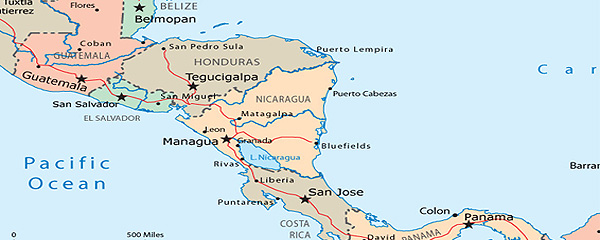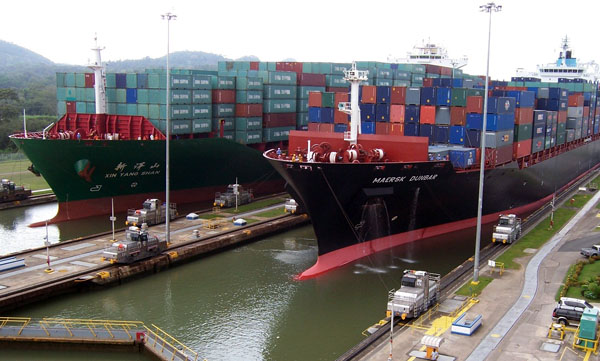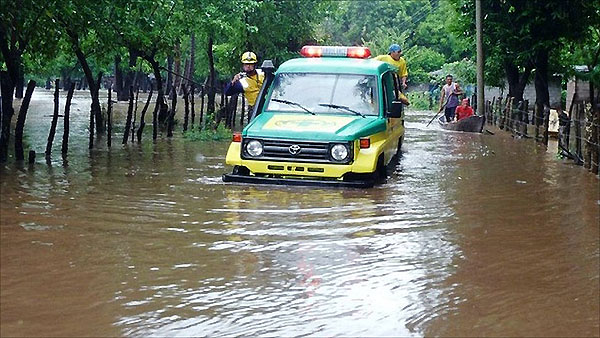09
Feb 2015
3 Things to Know Before Importing into Central America
Mercatrade recently wrote about the issues what you should know before importing into Central America. As a lot of you readers are currently or have been planning on importing to Central America, also we in want to address these important issues out to you. Next, I will point out the most important areas that were discussed.
1. Strong and Growing Economies
A number of growing industries in the region are transforming the economies of Central American countries. Banking, tourism, expatriate growth, and alternative energy are some of the booming industries that are directly contributing to the growing disposable incomes in the region. While many positive aspects are occurring, it is also important to examine some of the struggles the region is working to overcome.
El Salvador, Guatemala, and Honduras have long been associated with great risk due to high crime rates which are often far more violent than in other countries throughout the region.
Honduras is working to improve their education systems in an effort to improve the lives of the poor; whereas, El Salvador is working to strengthen the economy by combating crime and to compensate for a recent agricultural struggle that affected their coffee leaves.
Nicaragua has also turned the corner into a positive direction. Nicaragua is one of the poorest countries in the region, however the country has made staggering strides in the past decade and does not experience the levels of violent crime like their neighbors. They have improved their economic conditions to the point that they are now focusing on minimizing the gap between the rich and the poor to ensure sustainable long-term economic growth.
Costa Rica and Belize are both strong economies in the region. Belize has the second highest income per capita in Central America that is supported by growing agricultural and tourism industries. Costa Rica has improved its economic standing over the past 25 years, according to the World Bank, and continues to thrive in tourism and an influx in expatriates.
The jewel of Central America is without a doubt the Panama economic system, which is transforming the image of the region and is seen as a over-whelming economy in the world rather than just in the Americas. As local industries explode, the government is taking strides to ensure the proper programs are in place to assist those less fortunate in an effort to minimize the divide between wealth and poverty for continued long-term progress and middle class growth.
2. Ports
Each country in Central America has at least some coastline; therefore, each country has its own port of import. Some countries are easier to ship to than others; whereas, certain countries pose higher risk when transporting goods over the road. Some ports are highly technologically advanced and others are severely lacking for modern infrastructure and controls. To whichever country you intend to ship, a practical, efficient, and safe route exists for your needs.
Keep in mind when you are planning your routes that the Panama Canal makes it easier than ever to reduce transit times anywhere from a few days to weeks and could save you hundreds to thousands of dollars. And, Wang Jing, a Chinese billionaire, has committed US$50 billion to develop the Nicaraguan Canal which is to be the second inter-ocean canal in the region.
Port Challenges
If you are shipping to this region, you should be mindful of the weather. This region is highly susceptible to hurricanes and dangerous storms, as well as earthquakes. The coasts have slight variations in their peak seasons. This is highly useful information to consider prior to selecting your country of import as weather changes often slow down port unloading, inspection processes, and inland deliveries.
If you are shipping to Honduras or Guatemala, it is best to ship directly to the country of import rather than to try to move your products across the border between the countries. This particular area of the region is often highly unstable with criminal activity from drug smuggling and illegal border crossings to theft of cargo. If you are required to ship across the border, it may be a sound investment to hire a private armed security detail to escort your shipment from the port to the final destination.
Technological Improvements
The infrastructure and technology advancements of Central American ports varies greatly. Some ports are severely lacking in infrastructure enhancements and efficiency, whereas some ports are some of the most well-run and technologically advanced the world over.
Panama has two of the most sophisticated and technologically advanced ports in the whole of the Western Hemisphere. The Panamanian ports of Colon and Balboa continually rank at the top of all lists for the best Latin American ports year after year.
Guatemala has plans for a new terminal at Port Quetzal, which will give a big boost to the nation’s shipping industry. The technological advances will bring much-needed efficiency and productivity to the Guatemalan port. Also, the Port of Cortes in Honduras, one of the largest port in Central America, is expecting improvements as soon as the funds are made available.
Ocean Lines and Transit Times
Only specific ocean lines will deliver to certain Central American countries and ports, and transit times will vary greatly depending on point of origin and final destination. Direct routes may not be possible causing increased transit times and overall costs of shipping to parts of Central America may be higher than you expect for any number of reasons such as low traffic volumes, security, and infrastructure.
Ocean Lines
Due to the limited amount of cargo that moves through Central America in comparison to other regions, you may need to find new ocean carriers. If you use a freight forwarder, they will be able to find the best options for your specific needs. Negotiating directly with ocean lines is often ineffective unless you ship a significant amount of cargo on an annual basis.
Transit Times
Transit times are less likely to be estimated with complete certainty in certain regions of Central America over others, and some ocean lines may not have direct service causing greater delays. If you are shipping into modern and efficient ports such as the primary ports of Panama, you are far more likely to meet your estimated delivery dates without significant delays at the port. If your cargo will be traveling in-transit to another country through Panama, you could face delays at border crossings and on inland roadways.
Examples of estimated transit times from port to port:
- – China, Shanghai – Nicaragua, San Juan del Sur (24 days)
- – South Africa, Cape Town Terminal – Honduras, Puerto Cortes (21 days)
- – USA, Miami – Panama, Colon (4 days)
- – USA, Seattle – Belize, Port of Belize (13 days)
- – UK, Southampton – Panama, Balboa (13 days)
3. The Importing Process
Developing trustworthy strategic partnerships will be essential to the ease and success of importing your goods. During sales negotiations, if your freight forward has a strong network within the region, do not be afraid to request an INCOTERM in which you control the shipment to your customer if they are new to the region. If you are unfamiliar with importing into Central America, it may be wise to select an INCOTERM that transfers ownership before it leaves the port of export. Do not forget to consider the trade agreements of the region to determine whether or not you might benefit from such partnerships.
Trade Agreements and Trade Blocs
Each trade agreement and trade bloc provides importing and exporting incentives for each country involved. Whether you are shipping technology components or environmentally friendly products, your shipments may be privy to a reduced tax or no tax at all. Before you sign any contracts, know whether or not your country has a trade agreement that might benefit your sale. It is always equally as important to ensure your country does not have a trade embargo with any country in which you do business.
Importing Challenges
Before you plan your shipping route, you should consider ports limitations and other challenges. It may be worth several hundred dollars to ship to a different port and transport the cargo over the road in some scenarios. For example, many of the lesser-developed ports lack operational cranes. A limited number of ports are able to receive feeder and Panamax vessels that require a berth depth of at least 10.7 meters.
Inland Transportation
The over-the-road infrastructure has much room for improvement, so bottlenecks often occur at border crossings due to inefficient customs practices. You should keep intermodal shipping challenges in mind when you are estimating your total transit and delivery times. Roads through mountainous areas become impassable during the rainy season due to flash flooding, mudslides, and various debris. Railroad intermodal transport exists in certain Central American countries such as Panama. Usage of the railways has drastically declined in recent years, however it is a viable option in certain circumstances.
Security
While Central America is not a high-level terrorist target, the region could be used as an intermediary source and it continues to be plagued with drug smuggling, corruption, cargo theft, and high-risk human trafficking activity. All of these security risks have caused additional security costs to much of inland transportation in various regions. You will find impressive scanning features in Panama and similar initiatives as additional ports in the region receive upgrades. You will find a number of ports participating in programs to improve port security throughout the Americas. Each country in Central America is aware that security must be improved to continue economic growth.
Here were our important issues.
How about yours: Do you have some other crucial factors to point out?
Read the full text at mercatrade.com
Read more at sbeinspection.com

































